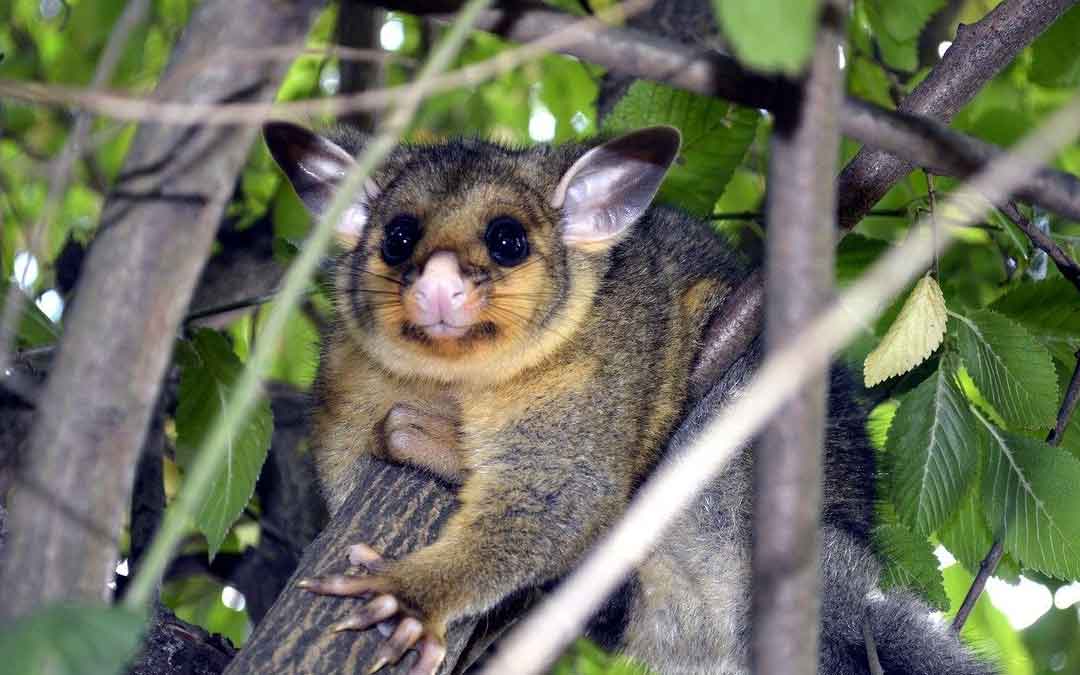Dealing with pesky possums in your garden

There’s no doubt possums cause all kinds of problems for gardeners. In fact, I’ve had possum problems in every garden I’ve had.
At my old rental house in Northcote the Common Brushtail Possums (Trichosurus vulpecula) ransacked my lemon tree, herbs and roses. And rats attacked my tomatoes. In another house in Alphington possums ate pretty much everything other than the alliums I planted.
At my current rental in Heidelberg they love devouring my silverbeet, parsley, dill, tomatoes, lemon tree and snow peas.
So, it’s fair to say I have a love/hate relationship with brushtail possums.
It seems my neighbour does too. One night just after dusk I heard a commotion on their shed roof. I presumed it was a possum and maybe it was fighting with another one.
The next day was very warm. Mid-morning, as I was working from home, I heard thrashing around on the shed roof again. Turns out they’d caught a possum in a trap the night before.
I went next door to tell them to release the trapped possum, but no one was home. Scared for the possum’s life (it was now not moving on a metal roof in full sun and 30-degree heat), I tried unsuccessfully jumping their fence.
I lightly misted the possum with my hose while I waited for help. Banyule City Council and a Wildlife Victoria volunteer both came; we got him off the roof and onto my side of the fence and then to the vet.
Amazingly, after 36 hours trapped in a cage without water, the large male was healthy enough to be released that evening.
Victorian regulations about capturing possums
Possums are protected under the Wildlife Act 1975. My neighbours now face a hefty fine. Trapping is legal, but there are strict conditions for anyone without a permit.
- Trapping is only allowed within buildings (such as your house).
- The traps must be protected from sun, rain and wind.
- Traps must be checked within two hours of sunrise.
- Trapped possums need to be released within 50 metres of where they were captured.
- If they cannot be released, they must be taken to a vet to be euthanased.
- Relocation of possums is not allowed (and apparently very few survive if they are relocated).
Read more information on the fate of relocated possums and the regulations.
So, how can you protect your garden from possums?
Well the truth is that we simply can’t completely remove possums from our gardens, so we need to find ways to live harmoniously with them.
I have tried all kinds of homemade sprays (chilli, fish sauce, garlic, etc.) and scent-based deterrents (moth balls, blood and bone, detergent sprays, etc.). I’ve also tried two of the available commercial possum deterrent sprays you can buy. To be honest though, none of these options have really worked for me.
In my opinion the best option is to exclude them from the plants you want to protect.
White small gauge netting that is secured taut in place over garden beds, trees, or fruiting branches, at night is the easiest way to protect your produce. Netting that is loose, has holes larger than 5mm wide, is stretchy or is darkly coloured may lead to flying foxes, possums, reptiles, and birds becoming entangled and injured.
Agriculture Victoria has developed some good instructions for netting fruit trees, including the new regulations that will come into effect next year, and Costa has some good instructions for netting garden beds on the Gardening Australia website. You can also purchase ready made options or build a more permanent structure.
Netting protects your crop from possums (and rats and birds!), but be aware that they exclude most pollinators too – so it’s great if you can open up the netting during the day to let the friendly and helpful pollinators in, especially when plants are flowering.
If you’ve tried other solutions, let us know in the Sustainable Macleod Facebook Group or by email.
Written by Jen Willis
